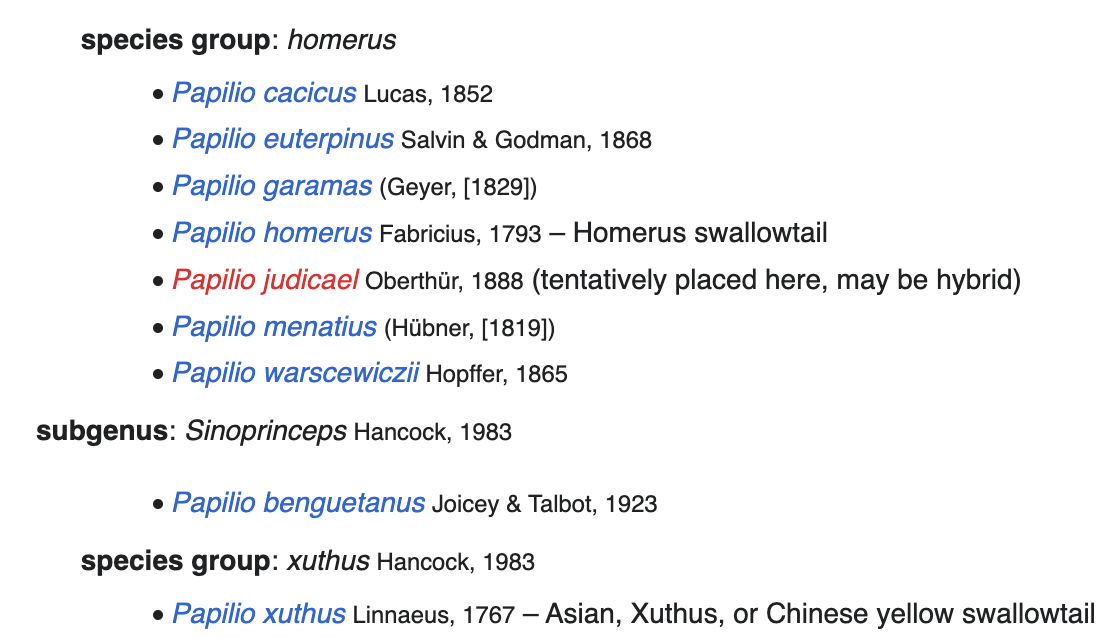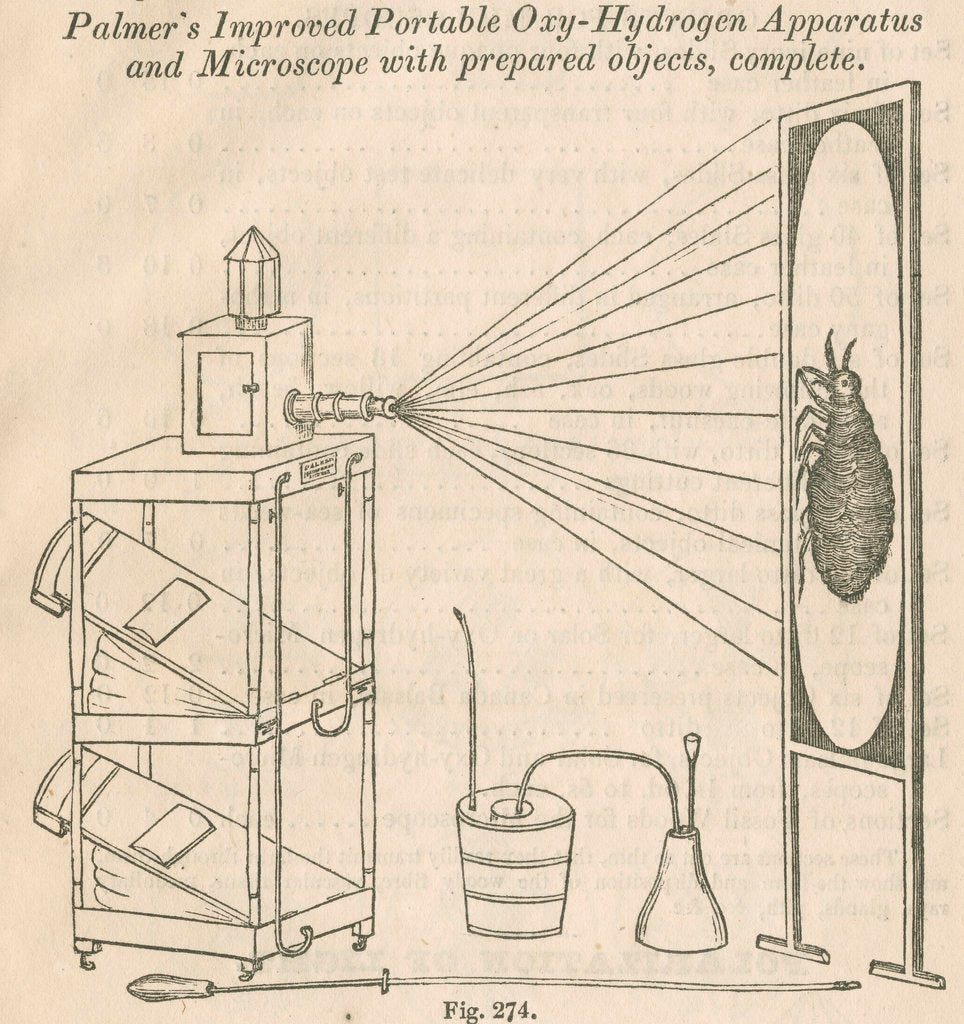Georeactor Blog
RSS FeedReading Blog - December 2023
I'm concluding my Reading Blogs series with The Malay Archipelago - the oldest book which I've featured (predating Chekhov's Sakhalin) and likely the longest? The author inspired young Fairchild (from The Food Explorer), David Attenborough, and other naturalists.
Ending this series and Arxiv Haul won't mean a total stop to reading. The goal is to prompt myself to find a new format or function? Ideas for what this could look like:
- Reading The International Brigades (about the Spanish Civil War) or Freedom Betrayed (by former President Hoover) and visiting locations or deep research (like this one)
- As discussed in Arxiv Haul, going to HuggingFace for paper discussions and model cards
- Contributing to Google's new quantum library Qualtran, with an HN-friendly write-up. I have a list of other interesting projects and organizations.
- Incorporating ML research into my process / average day. GPT generation, a "chat" format, fine-tuned summarization of papers, something else?
The Malay Archipelago (Alfred Russel Wallace, 1869; annotation by John van Wyhe 2014)
Alfred Wallace, famous for almost-maybe-discovering evolution, describes eight years braving seas, mud and muck, and bugs in chapters organized by island. Highlights include catching butterflies and birds of paradise, riding the monsoon current from Makassar to Papua, and the snapshots of life on remote islands and trading posts.
This edition is organized by John van Wyhe, a historian with a focus on Darwin and Wallace. Though I'd always heard that Wallace's research was overshadowed, pre-empted, or rushed by Darwin in some malicious way, our annotator makes clear that they were friends and corresponding the whole time. Darwin helped make introductions, and Wallace dedicated this book to him.
We also get an introduction to Wallace the person, traveler, and entrepreneur. His first trip collecting specimens in South America ended in disaster (Wiki says the return ship caught fire at sea; they were adrift in a lifeboat 10 days before rescue by the Jordeson). Noticing that the Amazon specimen market was now saturated, Wallace planned his next trip to the Malay Archipelago. He would collect 125,000 specimens (counting individual insects, and work by assistants) and sell books about both adventures.
The scientific mystery at the heart of this journey was evolution. It's difficult to express in present-day terms what people believed about evolution/transmutation prior to Darwin making it synonymous with natural selection. A bestseller Vestiges of the Natural History (then anonymous, now known to be by Robert Chambers) described ancient species getting replaced by more advanced species. Babbage (of computing history) suggested this followed a God-given timeline. Wallace's publication during the trip discussed species giving birth to "daughter species" which are better suited for their environments. Writing the book after the success of Origin of Species allows Wallace to frame his specimens (such as a butterfly disguised as a leaf) as prime examples of natural selection.
The next mystery was how Indonesia's islands have wildlife from either Australian or Asian continents. The prevailing view was that a species was restricted only by climate and geography, so it was puzzling that neighboring islands Bali and Lombak could be so distinct. Wallace identified that at an era of lower sea levels these were connected to the two continents, and counts of endemic species could build a timeline of when they became isolated. He finds highly-adapted Australian birds, no large marsupials, and less-adapted Javan birds in Timor, leading to a conclusion that the island group was separated from Australia by a narrow strait long ago, and only recently encountered Java.
This division had also been a topic of discussion before this book, and ship anchorage maps had revealed that the archipelago was in a shallow sea. But this work defined the Wallace Line, and to some extent Wallacea, to this day.
Some other good calls:
- Earthquakes trigger flooding on other islands due to "upheavals of the ocean-bed"
- "In fact to eat Durians is a new sensation, worth a voyage to the East to experience." Also has praise for breadfruit.
- Puts "running amok" alongside other cultures' concepts of honorable death, such as samurai's seppuku and Romans falling on their sword.
- From measuring several killed orangutans, he dismisses rumors of a giant, man-sized orangutan species.
--
The 100th anniversary of Wallace's death in 2013 was marked with museum exhibits and documentaries. His book was translated to Bahasa Indonesia, and my English copy was published by the National University of Singapore. As best I can tell, his Malay and Indonesian Wiki articles are as laudatory as the English version. A monument was installed on Sulawesi in 2019.
As an artifact of the 19th century, the book is entrenched in the racism and phrenology of the time, such as an appendix "On the Crania and the Languages of the Races of Man in the Malay Archipelago". Throughout Wallace's travels, the Malays, Papuans, Dayaks and Sasaks, etc. are described as if every person fits one physical and moral archetype. When this was first published, it may have introduced Europeans to differences between peoples of each island. In Dobo he challenges expectations by finding a peaceful living among "various races [...] who have the very worst reputation for honesty". But to the modern reader you see terms "semi-barbarous" and worse, and the praise for self-appointed monarch James Brooke and the colonial seizure of spice trade.
Generally Wallace criticizes Muslim or animist cultures, joining Singapore's Raffles in seeing ancient Hindu temples as a lost noble empire. Yet when visiting Lombok, under Balinese/Hindu rule, he is indignant when village elders treat him with suspicion and ask for a letter from the Rajah. In Borneo he gets frustrated with Forest Dayak [Iban] assistants stopping to respect villages along the way. In Sulawesi a Rajah grants him a house (Wallace sets terms to compensate the family). In the Aru Islands he imagines how he will be remembered in the tribe's mythology. Essentially he expects to be treated as the boss and be received by the European elite wherever he shows up.
There's even praise for a "paternal despotism" of Dutch plantations, comparing it directly to parents and children. In modern scholarship, North Sulawesi is used as the prime example for a Stranger King theory that this system was a strategic decision by traditional chiefs to keep their status, and to use foreign mediation to end local conflicts. There is some history of tribute in the pre-colonial region and Greece/Persia to support stranger kings.
The Brooke family gave up Sarawak after WWII. Recently the Brooke Trust has set up a gallery and an online archive, which is cool. Then Jason Brooke mentioned Stranger King theory on a podcast just last month. 🙄 So I'm divided on whether to take it as colonial apologia or something truly nuanced.
--
Modern Multicultural Democracy Dance Break
--
Wallace's job is catching and preparing specimens. The sections on shooting orangutans and trying to keep monkeys as pets are particularly rough. So it's maybe not in the nature lovers gift guide.
Van Wyhe's footnotes are used for corrections, modern names of species, references needed for 19th-century name drops. We also get excerpts from the journals about Malay and indigenous assistants, or comments from other travelers and naturalists who might've disagreed with Wallace's observations.
A few of Wallace's claims remain confusing or unchecked for the modern reader. Primula imperialis is one of many species said to be confined to only a specific mountain or island, but under the current species name - Primula prolifera (Wall.) - state a range northwest into India.
His observations were part of new butterfly research as recently as 2020 (1, 2).
One page describes a butterfly with and without tails whose inheritance puzzled collectors in Europe. Wiki explains these are the species' polymorphic forms, [similar to the insect science that I learned from Locust [this article also introduced me to the wild world of Wiki articles on butterflies as they get shaken up by genetic research, see below]]. The multiple female butterfly forms inspired naturalists to name four species from this genus "Mormons" 😳.

On Waigeo (near Papua) Wallace sees an aurora, acknowledging he "could hardly believe that this was possible". This led me to look up the Carrington Event / solar storm, but Waigeo was about 10 months later? Hmm.
Looking up Vestiges of the Natural History of Creation led me to an online marketplace for rare first edition books, which was oddly tempting. Abraham Lincoln read Vestiges so he maybe thought that bugs were generated from electric sparks?
At a remote trading post, mass-produced clothes and dishes are affordable, even though factory workers live in poverty in England. Puzzling over this, Wallace suggests a 3x price here would help the loom worker buy clothes for her own family. The critique of global markets is oddly reversed from the present-day. A few things occurred to me: buying new Western clothes was infrequent in the archipelago so demand + volume are too low to enrich the workers; the traders have also avoided adding a premium; and mass producing clothing was a high-tech industry of the time. It reminds me of today's CPM business model (i.e. a YouTube view and ad click have dramatically different value in a low-income country; the manufacturer has decided simply to maximize views/output).
A replica of the Makassan praus: https://www.youtube.com/watch?v=VS5ZAzZmSpg
Did some Googling and found little info about the oxy-hydrogen microscope / projector mentioned by Wallace. It was invented in the 1830s.

Special Linguistics Section
MABBIM is the organization for a consistent Malay language between Brunei, Indonesia, Malaysia, and Singapore. After some difficulty getting info, I am not sure whether it's the type of org where you could visit an office or sit down with someone who works day-to-day on it, or if they focus on publications.
There was a thread on the Indonesia subreddit about differences including a word meaning "free" vs "useless" hampering marketing. Langfocus has a detailed video on differences between Bahasa Indonesia and Bahasa Melayu, including roots in English, Dutch, and Portuguese loan words.
On the Malaysia subreddit, a Chinese-Malaysian user asked about ordering daging ayam (intending: chicken meat) and receiving both red meat and chicken; commenters discuss whether "chicken" alone could be mistaken for broth, suggesting OP should get out of his comfort zone more often.
Wallace returned from Bacan/Batchian on an outrigger canoe called kora-kora; Wiki discusses word origins possibly as old as the Malayo-Polynesian language group.
His use of attaps for the palm leaves used for roofs, coincided with Duolingo teaching me that the modern Indonesian word for roof is still atap.
Updates to Previous Reads
Continuing ice cream drama - the founders of NYC chain Ample Hills, who made a podcast about going bankrupt and starting over with The Social in Brooklyn, returned to the original company this summer under a new CEO, then were forced out again.
A Reddit comment snarked that "They weren't honest with the Board about an ice cream breakthrough"
From the latest interview it sounds like after the couple courted other investors, the new owners went back to the loan terms and contracts around The Social, which this couple frustratingly did not update or formalize to protect their interests.This month I discovered the "post-Mormon" podcast universe... Growing up non-religious in a moderate-but-assumed-Christian community, I was fascinated both by fundamentalists and that my classmates had essentially the same beliefs but were less moved by them and 'normal'. So the podcast is new info for me.
There is a perception that Mormons are unwavering, so it's interesting to hear that missionaries feel disillusioned, draw attention to the history of Black people and women in the church, weren't sure whether a mission was right for them, deciding as a couple to leave the church. This episode was a rather dramatic story: https://www.youtube.com/watch?v=7keYN8l8PwY
On other episodes, the host has talked about becoming newly fascinated by Joseph Smith's story when learning about him as a 19th-century spiritualist and treasure-hunter. There is also a niche "Mormons on Mushrooms" podcast which (a) has spicy theories about early Mormons and (b) overflowed my tolerance for references to Jungian psychology.The odd Reddit ad below was for Priogen, a prion-detection kit / mail-in service which spun out of U. Minnesota.

Bikes return to the Chicago-Milwaukee Amtrak
New candidates are having difficulty putting their Chinese names on the ballot in San Francisco elections
Over Christmas I watched Fired on Mars and (most of) Rebel Moon. Both are interesting in creative origins as an animated short, and a rejected Star Wars script respectively.
"Fat Leonard" is back in US custody.
Twitter comments on how GOP term limits for their House committee chairs leads to attrition and larger political shifts.
Kim Denicola suffered amnesia after a migraine in 2018. This reminded me to look for updates about Su Meck, but her latest Tweets are from 2021.
AskHistorians was skeptical about Mecca being originally located in Petra, or anywhere else.
Reddit thread noted that the Dungan Revolt overlapped with Hong Xiuquan's Taiping Rebellion.
Story of the only-ever underwater submarine vs. submarine battle